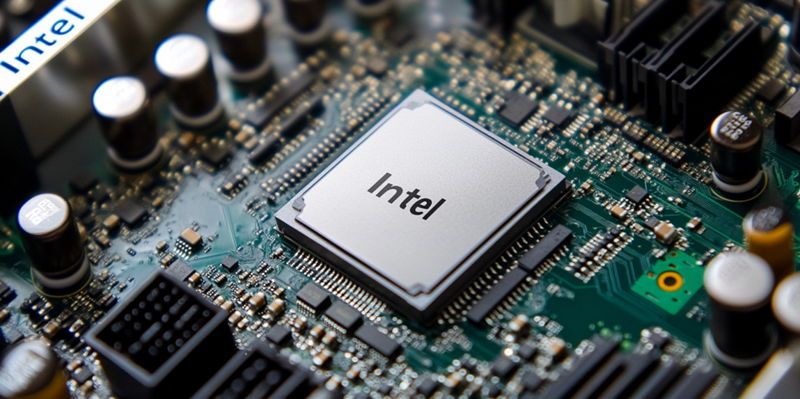The overclocking community has been buzzing with excitement after Intel’s latest Arrow Lake desktop processors achieved a remarkable feat. The Core Ultra 9 285K model, in particular, has set a new standard by hitting an astonishing 7.5GHz, marking a significant milestone in computing performance. This achievement was spearheaded by the renowned overclocker, Elmor, and his dedicated team, who utilized an Asus ROG Maximus Z890 Apex motherboard. To ensure the CPU could perform at these extreme levels, they employed liquid helium cooling, a cutting-edge method that allows the processor to maintain stable high speeds without overheating.
In addition to the hardware, AI technology played a crucial role in this overclocking success. Specifically, AI-assisted generative design was employed to create an optimized LN2 pot, a critical component for effective cooling during intense overclocking. By leveraging AI, the team could swiftly explore numerous design alternatives, resulting in a unique product that significantly enhanced the cooling efficiency. This sophisticated design was brought to life using advanced 3D printing technology from 3D Systems, forging a path forward for future high-performance computing endeavors. The collaborative effort between traditional overclocking techniques and innovative technology has captivated the tech community, proving that AI and human ingenuity can achieve extraordinary results.
Cutting-Edge Cooling and Design Solutions
Elmor and his team’s groundbreaking achievement not only set a new benchmark for overclocking but also showcased the future possibilities of integrating AI in performance hardware design. The AI-assisted generative design approach, spearheaded by Diabatix, was instrumental in optimizing the LN2 pot. This component had to meet the unique and rigorous requirements needed for sustained high-frequency operations of the Intel Core Ultra 9 285K. By utilizing AI, the team was able to swiftly generate and evaluate multiple design configurations that traditional methods might have overlooked.
The resulting LN2 pot design was then manufactured using advanced 3D printing technologies by 3D Systems. This allowed for precise control over the pot’s geometry and material properties, ensuring maximum thermal efficiency. The combination of AI-driven design and modern manufacturing techniques has revolutionized how cooling solutions are approached in extreme overclocking. This overclocking project demonstrated the successful melding of cutting-edge technology and practical application, paving the way for more innovations in hardware performance optimization.
The Core Ultra 9 285K’s impressive overclocking results were underscored by several world records in the 3DMark CPU benchmarks. Additionally, it secured top rankings in various other performance tests such as Cinebench and Geekbench. These achievements not only highlight the raw power of the hardware but also emphasize the effectiveness of the advanced cooling solutions employed. The unprecedented performance capabilities showcased a harmonious synergy between traditional overclocking skills and the latest AI and 3D printing technologies.
Market Reception and Performance
While the 7.5GHz milestone is undoubtedly a significant achievement for enthusiasts and professionals specializing in high-performance computing, the broader reception of Intel’s Arrow Lake processors has been more measured. Many within the tech industry have pointed out that despite the breakthrough in overclocking, the overall performance gains from Arrow Lake compared to its predecessor, Raptor Lake, are incremental. This raises questions about its broader applicability, particularly for average consumers and gamers who may not benefit from the extreme performance capabilities exhibited in controlled, overclocking scenarios.
Specifically, gaming performance has shown varying results, which has impacted the market reception of Arrow Lake processors. Although the Core Ultra 9 285K has proven its mettle in synthetic benchmarks and specialized applications, real-world gaming performance has not seen a consistent or revolutionary improvement. This inconsistency has somewhat dampened the excitement among gamers who expected a more substantial leap in performance. As a result, the processor, despite its impressive overclocking feats, faces criticism for not delivering a more rounded improvement across all use cases.
Still, the Arrow Lake processors, including the Core Ultra 9 285K, offer a glimpse into the future of computing. The innovative use of AI in hardware design and the ability to achieve extraordinary overclocking benchmarks provide valuable insights for upcoming technology. It suggests that while current market reception might be lukewarm, there is still potential for these processors to shine in specialized applications and future updates from Intel may address some of their current limitations. This nuanced reception mirrors the dual nature of the Core Ultra 9 285K itself: extraordinarily capable in niche scenarios but perhaps not yet transformative for the average user.
Conclusion
The overclocking community is thrilled by Intel’s latest Arrow Lake desktop processors, particularly the Core Ultra 9 285K model, which has reached a groundbreaking 7.5GHz. This remarkable achievement sets a new benchmark in computing performance. The milestone was accomplished by the esteemed overclocker Elmor and his dedicated team, using an Asus ROG Maximus Z890 Apex motherboard. To maintain such extreme speeds, they tapped into liquid helium cooling—a sophisticated technique ensuring the processor stays cool and stable without overheating.
In this impressive endeavor, AI technology played an indispensable role. The team employed AI-assisted generative design to develop an optimized LN2 pot, a vital component for cooling during intense overclocking sessions. By harnessing AI, they could quickly assess multiple design variations, leading to a unique product that bolstered cooling efficiency. This advanced design was realized through cutting-edge 3D printing technology from 3D Systems. The synergy of traditional overclocking methods and innovative technology has captivated tech enthusiasts, highlighting that AI and human creativity can achieve extraordinary feats.

